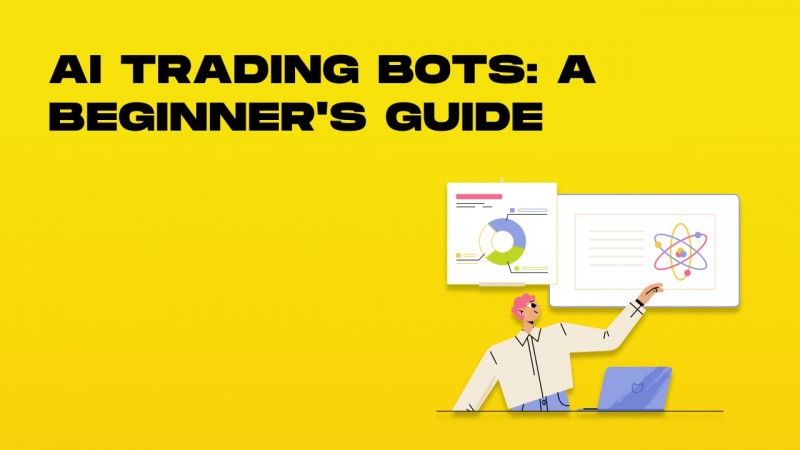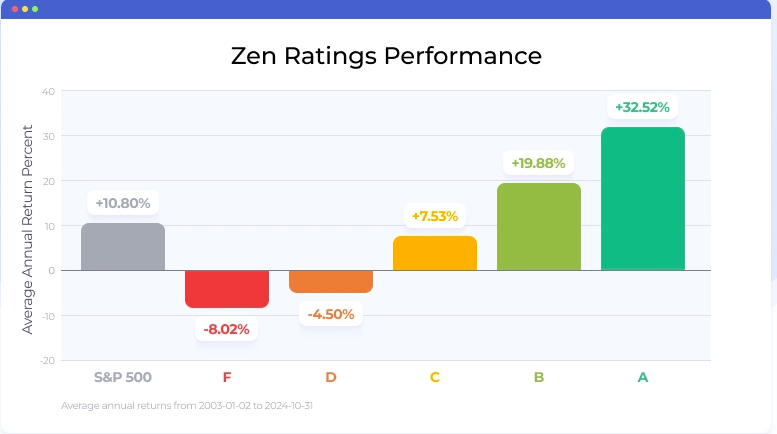20 Free Ways For Deciding On AI Stock Trading Sites
20 Free Ways For Deciding On AI Stock Trading Sites
Blog Article
Top 10 Tips For Evaluating The Accuracy Of Ai Trading Platforms That Predict Stocks Or Analyze Trading Data
You must verify the accuracy of AI trading platforms which predict and analyze the price of stock. This will ensure you're using a reliable tool. Here are the best 10 ways to test these platforms.
1. Backtesting Results
What to look for: Find out if a platform has backtesting capabilities to test the performance of its predictions on historical data.
Why It's Important: Backtesting allows you to verify the accuracy of an AI model. It can be done by comparing predicted outcomes with actual historic results.
Search for platforms that permit users to modify backtesting parameters, like time periods and asset classes.
2. Real-time tracking of performance
What to watch for: Watch how the platform responds in real time market conditions.
Why it's Important Real-time performance is an excellent indicator of the effectiveness of a platform than only historical backtesting.
TIP: Sign up for a free trial account or demo account to compare real-time market predictions with actual movements.
3. Prediction Error Metrics
What to Look For Analyze metrics like Mean Absolute Error (MAE), Root Mean Squared Error (RMSE), or R-squared to determine prediction accuracy.
Why it matters: These metrics are a quantitative way to determine how closely predictions correspond to actual results.
Tips: Platforms that openly reveal their metrics tend to be more transparent and reliable.
4. The Win Rate and the Success Ratio
What to look for: Look at the rate of winning on the platform, which is the percentage of forecasts that are accurate. Also, look at its success ratio (the profitability of trades made on the basis of the predicted outcomes).
Why is it Important The high win rate and success ratios show greater predictive accuracy and potential profits.
Tip: Be cautious of platforms that claim unrealistic win rates (e.g. 90%) %+), since the system cannot be perfect.
5. Benchmarking Market Indices against Benchmarks
What to Watch for: Compare performance and forecasts of the platform to the major market indexes.
What is important This will help to determine if a platform is outperforming or underperforming the overall market.
Tips: Don't just seek out short-term gains but also a consistent performance over a long time.
6. Consistency in Market Conditions
What to Look for: See how the platform's performance is affected by various market conditions.
What is important It is important that the platform be able to function in all kinds of market conditions, not only when conditions are favorable.
TIP: Test the platform during volatile times or market downturns.
7. Transparency in Methodology
What to look out for: Learn about the AI algorithms and models employed (e.g. neural networks and reinforcement-learning).
Why is it important Transparency allows you to evaluate the reliability and scientific rigor.
Avoid platforms that employ "black box models" that don't clarify how they generate predictions.
8. Tests by independent experts and User Reviews
What to look for when choosing a platform Check out the feedback of users and search for tests that are independent or independent reviews.
Why it's important: Independent reviews, testing and evaluations offer unbiased and unbiased information on the accuracy of the platform and its performance.
Review user comments on forums like Reddit copyright and financial blogs.
9. Risk-Adjusted Returns
What to Watch for: Measure the platform's performance with risk-adjusted metric such as Sharpe Ratio or Sortino Ratio.
Why it Matters: These metrics take into account the level of risks taken to obtain the desired returns. This provides a full analysis of performance.
Sharpe Ratios above 1 indicate higher returns, risk-adjusted.
10. Long-term Track Record
What to Look for How to evaluate the performance of the platform over time (e.g. three to five years).
Why It Matters Why it is Important: Long-term results are a better indication of reliability than short term.
Avoid platforms with only short-term success or results that have been cherry-picked.
Bonus Tip - Test your account using a demo version
Test the platform's real-time predictions by using a demo or trial account, without risking any money. You can test the accuracy and performance of the platform first-hand.
These tips will help you evaluate the reliability and performance of AI platforms for stock prediction. This will enable you to select a platform that best suits your trading needs and the risk you are willing to take. Be aware that no trading platform is perfect and the most effective strategy is to mix AI insight with your own personal analysis. See the best additional info on chatgpt copyright for more tips including chart ai trading assistant, ai investment platform, incite, best AI stock, chatgpt copyright, best AI stock, chatgpt copyright, incite, best ai for trading, investing ai and more.
Top 10 Suggestions To Judge The Latency And Speed Of Ai Stock Trading Platforms
Latency and speed are crucial when it comes to looking at AI software for stock prediction or analyzing trading platforms. This is especially true for high-frequency traders, algorithmic traders and active traders. Even millisecond delays can have an impact on the success of the trade. Here are ten of the most effective methods to gauge the speed and the latency of trading platforms.
1. Real-Time data feeds are a great way to evaluate the quality of your real-time data
Data delivery speed Make sure the platform delivers live data (e.g. sub-millisecond delay).
Nearness of the data source: To decrease the amount of time required to transfer data, verify if your platform's servers can be found near exchanges that are major.
Data compression: Determine whether the platform is using effective data compression techniques to speed up data delivery.
2. Check the trade execution speed
Order processing time: This is the time it takes for the platform to process and execute trades once you have submitted an order.
Direct Market Access (DMA) - Ensure that the platform supports DMA. This allows orders to go directly to the exchange, without the need for intermediaries.
Execution Reports: Verify if your platform offers detailed reports on the execution of orders, with timestamps.
3. Examine the Receptivity of Platforms
User interface (UI) Speed test the platform's response time to inputs.
Updates to charts: Check that visualisations and charts update in real-time, with no lag.
Mobile app performance When you're using a mobile app, ensure it performs just as fast as a desktop version.
4. Look for infrastructure that is low-latency.
Server Locations: Make sure that the platform has servers that are low-latency and located near major financial exchanges or hubs.
Co-location service: Discover whether your exchange offers this feature. This lets you host trading algorithm on servers close to the exchange.
High-speed networks: Verify that the platform utilizes fiber-optic networks that are high-speed or low-latency technologies.
5. Evaluation of Simulation and Backtesting Speed
Test the speed at which your platform can analyze and process past data.
Simulation latency: Ensure the platform is able to simulate trades in real-time with no noticeable delay.
Parallel processing: Check whether the platform is using the concept of distributed computing or parallel processing to speed up complex calculations.
6. Calculate API Latency
API responses: Determine the speed at which APIs can respond to queries (e.g. retrieving information from the platform, placing orders).
Rate limits: Check if API has reasonable rates limits in order to avoid delay during high-frequency trades.
WebSocket support: Check if the platform uses WebSocket protocols to support real-time, low-latency streaming of data.
7. Test stability of the platform while under load
High-volume trading: Simulate high-volume trading scenarios in order to determine if the platform remains stable and responsive.
Market volatility: Test the platform during times of extreme market volatility to ensure that it can handle sudden price changes.
Stress testing: Check whether the platform provides the tools to stress test your strategies under extreme circumstances.
8. Assess the connectivity and network of your choice
Internet speed requirements: To ensure maximum performance, ensure that your internet connection speed is at the recommended platform's speed.
Redundant Connections: To prevent downtime, check if the platform can support redundant internet connections.
VPN latency. If using the VPN be sure to check whether it creates significant latency.
9. Make sure to look for speed optimization features
Pre-trade analytics: Make sure that the platform you choose to use has analytical tools for pre-trade to improve the routing of orders.
Smart order route (SOR) You can check to determine whether SOR is being used by the platform to determine the fastest and cost-effective execution venues.
Latency monitoring: Check whether the platform has tools to analyze and monitor latency in real-time.
Review Benchmarks and User Feedback
User reviews: Read user feedback to gauge the platform's speed and latency performance.
Third-party benchmarks from third-party. You can find benchmarks from independent sources, or reviews that compare the performance of a platform against other platforms.
Case studies: Find out whether the platform has testimonials or case studies highlighting the platform's low-latency capabilities.
Bonus Tips
Free trial period: Try the platform’s latency and speed in real-world scenarios by using an online demo or trial.
Support for customer - Make sure there is support available for issues relating to latency, optimization or any other problems.
Hardware requirements. Examine if a platform requires specialized hardware (e.g. an ultra-fast computer) to function at optimal speed.
If you follow these guidelines to evaluate the performance and speed of AI stock predicting/analyzing trading platforms and ensure that you select the best platform for your requirements for trading and reduces delays. The importance of low latency is particularly important for high-frequency and algorithmic traders, since even tiny delays can significantly impact profits. Follow the recommended ai share trading advice for site recommendations including invest ai, best AI stocks to buy now, AI stock investing, chart analysis ai, AI stock trader, AI stock predictions, free ai tool for stock market india, stock predictor, AI stock predictions, investing with ai and more.